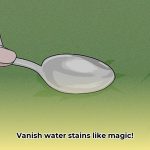Banishing Water Spots: A Sparkling Car Awaits!
Water spots: the bane of a freshly washed car. These unsightly blemishes, caused by evaporated water containing minerals, can make your clean car look dirty. This guide dives deep into the science of water spots, providing practical, step-by-step instructions for removal and prevention. Get ready to reclaim that showroom shine!
Understanding Your Enemy: What are Water Spots?
Water spots form when water evaporates, leaving behind mineral deposits. There are two main types:
- Type I (Soft Water Spots): These are like surface dust – easily removed with a gentle wash. Imagine a light film on a glass after it air dries.
- Type II (Hard Water Spots): More stubborn, these are etched into the finish, requiring specialized attention. Think of them as tiny craters on your car’s surface.
The type of water you use plays a significant role. Hard water, rich in minerals, is more likely to leave spots, especially Type II. Ongoing research suggests that the specific mineral composition can influence the spot’s appearance and difficulty of removal.
Water Spot Removal: A Step-by-Step Guide
Here’s a breakdown of various removal methods, starting with the gentlest:
Method 1: The Two-Bucket Wash & Dry
The foundation of spot prevention.
- Prepare: Fill one bucket with car wash solution, the other with plain water for rinsing your wash mitt.
- Wash: Clean a section, then rinse the mitt in the clean water before re-soaping.
- Dry Immediately: Crucial for preventing spots. Use a clean microfiber towel.
Method 2: Vinegar Solution (Type I)
A mild, DIY solution.
- Mix: 50/50 white vinegar and distilled water in a spray bottle.
- Apply: Spray on the spots.
- Rinse & Dry: Thoroughly rinse with clean water and dry immediately.
- Caution: May strip wax, so re-waxing might be necessary. Test in an inconspicuous area first.
Method 3: Rubbing Alcohol (Stubborn Type I)
A stronger approach for persistent spots.
- Apply: Dampen a microfiber cloth with isopropyl alcohol (70-90%) and gently rub.
- Caution: Test on a small area first, as it could damage some finishes.
Method 4: Detailing Clay (Both Types)
Lifts embedded contaminants.
- Clean: Wash and dry your car.
- Lubricate: Spray a clay lubricant on the area.
- Glide: Gently rub the clay back and forth.
- Wipe: Clean the residue with a microfiber towel.
Method 5: Commercial Water Spot Removers (Both Types)
Convenient and often effective. Always follow the manufacturer’s instructions. Some experts believe that removers containing mild abrasives work best on Type II spots, but may require additional polishing. Current research is exploring gentler, yet effective chemical formulations.
Method 6: Professional Detailing (Type II)
For deep etching, professional help might be necessary. Detailers have specialized tools like polishing machines for safe and effective removal.
Prevention is Better Than Cure
Proactive steps for a spot-free car:
- Immediate Drying: The most effective prevention method.
- Filtered Water: Using filtered or distilled water for the final rinse minimizes mineral deposits.
- Protective Layers: Wax or sealant creates a barrier against water and contaminants.
Advanced Prevention: Ceramic Coatings
A ceramic coating provides a super-hydrophobic layer that repels water, significantly reducing the risk of water spots. It’s a long-term investment for easier maintenance and a lasting shine. Professional application is recommended for optimal results.
Comparison Table: Choosing the Right Method
| Method | Spot Type | Effectiveness | Precautions |
|---|---|---|---|
| Washing & Drying | Type I | Good | Essential after every wash |
| Vinegar Solution | Type I | Good | Can strip wax, test first |
| Rubbing Alcohol | Type I | Very Good | Can damage some finishes, test first |
| Detailing Clay | Both | Excellent | Use with lubricant, proper technique is crucial |
| Commercial Remover | Both | Varies | Follow product instructions carefully |
| Polishing | Type II | Excellent | Requires skill, consider professional help |
Frequently Asked Questions
- Q: What if DIY methods don’t work? A: For persistent Type II spots, consult a professional detailer.
- Q: Can I use tap water? A: It’s advisable to use filtered or distilled water for the final rinse to minimize spots.
- Q: How often should I wax? A: Every 3-6 months is a good starting point, but follow the wax manufacturer’s instructions.
Beyond Water Spots: Related Car Care
Protecting your car from the elements involves more than removing water spots. Proper car care can involve using paint protection films and regularly cleaning your car’s exterior.
Conclusion: Maintaining a Spotless Finish
With the right knowledge and techniques, keeping your car spot-free is achievable. By understanding the science behind water spots and implementing the methods outlined in this guide, you can achieve a sparkling clean car you can be proud of.
- How to Measure Your Belt Size (for Women): 3 Easy & Accurate Methods - April 27, 2025
- How to Remove Permanent Hair Dye From Hair: Safe & Effective Methods - April 27, 2025
- How to Remove Ink from Leather: Effective DIY Methods and Expert Tips - April 27, 2025










